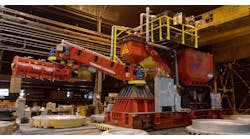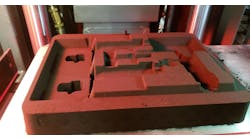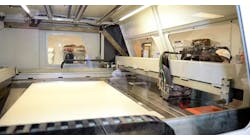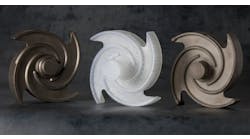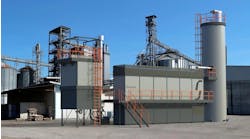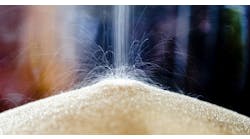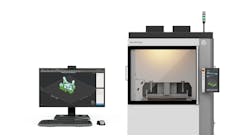New Build Processor for IC Patterns
Jack Palmer, 1953-2024
Could Cold Plasma Change HPDC?
The expanding scope of automotive emissions regulations is pressuring automakers and their suppliers, one result of which is designers and manufacturers’ focus on ‘lightweighting’ new vehicles. Their goal is to reduce overall vehicle weight to improve fuel economy and range by introducing a growing number of hybrid and electric vehicles.
To achieve overall vehicle-weight reduction, engineers are adopting a range of materials and production techniques to create lighter components for powertrains, drivetrains, and structural systems. This use of new materials - including aluminum, carbon-fiber composites, high-strength steel, magnesium, and titanium - brings a need to re-think traditional manufacturing and assembly processes and embrace new technologies and techniques.
For diecasting in particular, engineers must consider how to improve product quality and productivity for large and complex parts. Alongside this, production costs need to fall, the total cost of ownership needs to be reduced, and the environmental impact of the diecasting process must be lowered.
A shift towards larger diecast parts -- The automotive industry is no stranger to automation, with many production lines already embracing Industry-4.0 standards. Physical and digital processes are increasingly intertwined as they aim to create smarter, more efficient production sequences. And still the pressure is on to combine production efficiency with those lighter materials.
Diecasting of course is a critical manufacturing process for the auto industry, to form parts such as engine blocks and transmission cases. Now, the technique is being adapted to cast one-piece structural parts like shock towers and torque bars, supporting those lightweighting goals. Tesla has drawn much attention for its stated goal of producing a unitary, diecast underbody structure to replace a combination of multiple welded and stamped components. This requires using the world’s largest diecasting machine to produce such a large casting - a change that could revolutionize automotive design and production.
The benefits of diecasting are well known to automakers: it’s a quick and relatively economical process that offers the repeatability required by mass production, meaning identical parts can be produced from one mold.
The move toward engineering a vehicle structure from a smaller number of large diecast parts rather than high volumes of smaller parts reduces production complexity and offers significantly reduced costs. Casting larger parts stands to remove as many as 70 steps from a more traditional production process, and while the benefits are clear the casting of larger parts brings complexity to the diecasting process.
To avoid compromising quality and increasing costs in the manufacture of large, complex components, specifying the correct die lubricant technology is essential to ensure an adequate release lubricant film is formed over the die surface.
As die tools increase in size and complexity, they become increasing difficult to lubricate using conventional water-based lubricant systems. Ensuring lubricant reaches all parts of the complex tool to prevent casting failure is a significant challenge, not easily overcome.
Lack of penetration of the lubricant spray into areas such as ribs, coupled with the low film forming capabilities of water-based lubricants is a real challenge for diecasters. Additionally, the spray heads used to apply water-based lubricants are simply too large, bulky, and inflexible to deploy lubricant successfully to all areas of the die face.
For an industry looking to cast larger components and maintain product quality, improve productivity, and reduce costs, water-free electrostatic lubricant systems like Quaker Houghton’s like Lubrolene® provide a solution. Such systems combine a high-power release agent, free from the drawback of conventional lubricants, coupled with a compact low weight spray system.
When Lubrolene WFR-EC is applied through a novel electrostatic spray gun, the lubricant spray droplets carry an electrostatic charge that, when coupled with a grounded die leads to exceptional lubricant deposition in all areas of the die. This includes deep ribs and other recessed features, which are very difficult to reach with other die lubricant applications. The low weight and small footprint of the spray head coupled with the control features of the application system mean that lubricant application can be readily adjusted across the die face to optimize lubricating films.
As the lubricant product is also water-free, any Leidenfrost effect – the phenomenon in which a liquid close to a hot surface produces an insulating vapor layer …a significant problem with water-based lubricants – is all but eliminated, leading to exceptional lubricant deposition and adhesion on the die surface. The very high adhesion performance offered by electrostatic spray reduces the amount of release agents required by up to 99.9% per cycle.
As well as reducing ongoing running costs, lubricant volumes are significantly lower, which combined with wax-free lubricant formulations result in much reduced build-up on equipment. In turn, the need for cleaning both spray head nozzles and dies is markedly lowered.
Added to the reliability, repeatability, and preciseness of the system, the inherently lighter Lubrolene electrostatic spray head offers the only practical solution for producing larger structural parts in high pressure diecasting machines that can range from 4,000 to 6,500 metric tons.
Once the practicalities of complex, one-piece diecasting are resolved by implementing new technologies, the benefits for automotive manufacturers begin to emerge fully. Reduced spray time, increased die life, and a low reject rate all lead to operational benefits and cost savings for manufacturers. Combine that with zero wastewater from the process and reduced CO₂ emissions (as a result of reduced air blow), and the environmental impacts of an efficient diecasting release lubricant are apparent.
Electrostatic spray increases tool life -- Along with quality, tool service life is a significant issue in diecasting. This is particularly the case with water-based agents, which rapidly cool the die surface between shots, leading to extreme temperature fluctuations for the die tool. These fluctuations can quickly lead to cracks forming on the die surface, as a result of repeated compressive and tensile stresses.
Cracks typically start forming after several hundred shots and limit a tool’s service life before it needs to be repaired. This issue can be eliminated almost entirely by adopting water-free electrostatic lubricants.
As Lubrolene is water-free, the rapid cooling effect on the dies is eliminated, as is the thermal and stress cycle normally experienced with conventional water-based die lubricants, dramatically reducing crack formation. Effectively, this means Lubrolene WFR-EC can extend tool service life and contribute to cost savings of more than €500,000 ($610,000) annually. With extended tool service life, there also are fewer costs for service and maintenance, which then delivers further savings by up to 20%, while process uptime is increased, and cycle time is decreased.
Diecasting has been a popular choice for metal parts production because it is versatile, reliable, accurate, and repeatable. However, as automakers move toward using larger and more complex diecastings, die lubrication technology and equipment must be enhanced too. It is the only way to improve the processes, with the further advantages of reducing porosity, cutting overall costs, and maximizing efficiency – all while matching the new emissions standards.
Switching from traditional water-based lubricants to a water-free electrostatic solution allows diecasters to produce larger components with higher process temperatures, while meeting the challenges of maintaining product quality, improving productivity, and reducing costs.
Mark Cross is the global business development director for diecasting at Quaker Houghton.
